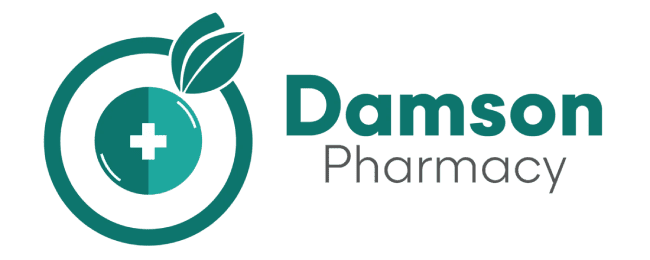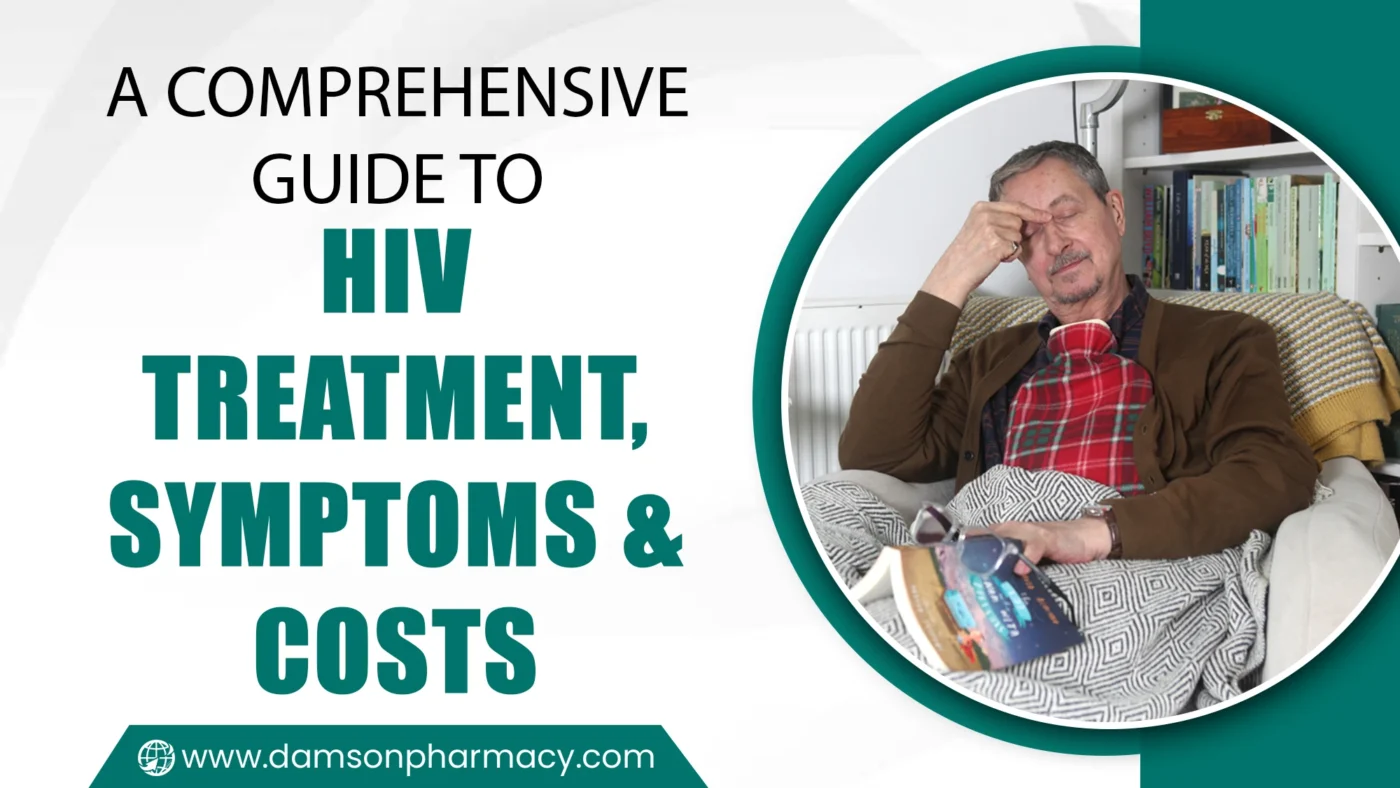A Comprehensive Guide to HIV Treatment, Symptoms & Costs
HIV treatment has come a long way in recent years, giving hope, improving health, and helping people with HIV live longer. But despite these advances, many people still have questions, worries, and misunderstandings about living with the virus, available treatments, and HIV as a sexually transmitted disease.
In this blog, we’ll cover important topics like how HIV is diagnosed, a guide to HIV treatment, costs, symptoms, and new possibilities for living with HIV without it being detected. Whether you’ve been diagnosed, are supporting a loved one, or just want to learn more, we’ve got plenty of helpful information.
What is HIV?
Human immunodeficiency virus (HIV) weakens your body’s immune system by attacking its cells. The immune system in the body helps the body fight infections, but HIV makes it harder to fight and increases the risk of other diseases. If left untreated, HIV can cause severe damage to the immune system, leading to AIDS or acquired immune deficiency syndrome.
HIV is called a retrovirus because it works in the opposite direction to insert its genetic material into human DNA. This process allows the virus to spread in the body and makes it difficult to eliminate. However, with proper treatment, people with HIV can lead healthy lives.
What are the Stages of HIV?
HIV, which is not treated, usually develops in three stages:
- Acute Infection: This is the moment when large amounts of HIV appear in the blood of people, and the body begins to produce antibodies to destroy the virus. Typically, people develop flu-like symptoms 2-4 weeks after contracting HIV, which can last for several weeks. At this stage, HIV is most transmitted to other people.
- Chronic Infection: HIV is still active and multiplies in the body, but at a slower pace. Some people may not have symptoms, but the virus is still transmissible. This stage can last for 10 years or more without treatment. If treatment is started, the virus may never progress to stage 3.
- HIV: This is the advanced stage of HIV, also known as AIDS. It occurs when the body can no longer fight the infection. The survival rate is about three years without treatment.
The Symptoms of HIV
Early symptoms of HIV can often be mistaken for flu-like illness. They usually appear 2-4 weeks after exposure to the infection. Clinical manifestation of HIV is usually understood through the three stages of HIV.
Stage 1 Symptoms
- Fever
- Night Sweats
- Muscle Aches
- Sore Throat
- Swollen Lymph Nodes
- Mouth Ulcers
Stage 2 Symptoms
- There Are Usually No Symptoms
- The Virus Is Still Active and In Its Initial State
Stage 3 Symptoms
- Rapid Weight Loss
- Diarrhoea Lasting More Than One Week
- Wounds In the Mouth, Anus or Genitals
- Pneumonia
- Extreme And Unexplained Fatigue
- Swelling Of The Lymph Glands
- Memory Loss, Depression, And Other Neurological Disorders
Treatment of HIV
Our guide to HIV treatment recommends antiretroviral therapy (ART). Arrest is the daily consumption of a combination of HIV drugs to suppress the virus. While it’s not a cure for HIV, it can shrink an HIV load so that the immune system remains vigorous and remains less susceptible to infections. To achieve optimal results, it is recommended to start ART as soon as possible after diagnosis.
1. Common Art Regimens
- NRTIs or Nucleoside Reverse Transcriptase Inhibitors: Block the reverse transcriptase, an enzyme that HIV uses to make copies of itself.
- Non-Nucleoside Reverse Transcriptase Inhibitors (NNRTIs): Directly deactivate reverse transcriptase by binding to it.
- Protease Inhibitors (PIs): Inhibit protease, another enzyme that HIV uses for replication.
- Integrase Thread Transfer Inhibitors (INSTIs): Block integrase by blocking viral DNA from integrating into the host genome.
2. Spegra Tablet
Spegra Tablet is an Anti HIV fixed-dose combination medicine used to treat HIV infection. It contains dolutegravir (50 mg), emtricitabine (200 mg) and tenofovir alafenamide (25 mg). This combo therapy functions by stupefying the enzymes that are required for HIV replication and lowers viral burden.
Side Effects of HIV Treatment
Side effects of the HIV treatment include the following:
- Headache
- Diarrhea
- Kidneys
- Nausea
- Fatigue
- Insomnia
- Problems with the Liver
Understanding the Cost of HIV Treatment
The cost of treating HIV varies depending on location, health system, and specific prescribed medications. The estimated cost of our guide to HIV treatment is mentioned below:
- Antiretroviral Therapy (ART): In the US, the cost of treating HIV over the lifetime of a person diagnosed at age 35 amounts to approximately USD 326,500 (at a discount).
- Spegra Tablet: The price of Spegra tablet is about ₹154.17 BGN.
NGOs and international bodies provide support and medicines at reduced prices or free of charge.
HIV and Herpes
The link between HIV and herpes is that Herpes Simplex virus (HSV), especially HSV-2, is widespread among people with HIV. About 70% of individuals infected with HIV-1 or HIV-2 have HSV-2, and 95% have either HSV-1 or HSV-2. The connection between HIV and herpes is discussed below:
- Increased Susceptibility: Herpes wounds can represent an entry point for HIV, which facilitates transmission.
- Impact on the Immune System: HIV weakens the immune system, making it difficult to control herpes outbreaks.
1. Herpes Management
- Antiviral drugs can help manage it and lower the risk of passing the infection.
- Consistent use of antiviral drugs can help maintain immune function by reducing the frequency and severity of herpes outbreaks.
Advice on Management and Well-Being of HIV
- Adherence: Consistently take the medications as prescribed to maintain viral suppression.
- Healthy Lifestyle: Keep a balanced diet, exercise regularly, and avoid substances that can weaken the immune system.
- Mental Health: Rely on consultants or support groups to deal with emotional and psychological issues.
- Regular Monitoring: Get regular checkups to check the virus load and the number of CD4 cells.
- Safe Practices: Apply safe sex practices and inform your partners about your HIV status to prevent the transmission of the virus.
Conclusion
Treatment of HIV has made tremendous progress, transforming a deadly diagnosis into a manageable and easy-to-solve chronic disease. People with HIV who are diagnosed early and take ART can live healthy lives and nearly normal lifespans.
Continued training, support, and investment in research are essential to address these problems. By staying informed and following our guide to HIV treatment, people and communities can work together to reduce infection transmission rates and move closer to ending the HIV epidemic.
Reference
- https://rmpartners.nhs.uk/wp-content/uploads/2022/03/RDC-Investigating-night-sweats-March-2022.pdf
- https://mana.md/wp-content/uploads/2022/04/LYMPH-NODE-ENLARGEMENT.pdf
- https://www.medicalsciencejournal.com/assets/archives/2016/vol2issue10/2-11-30-126.pdf

